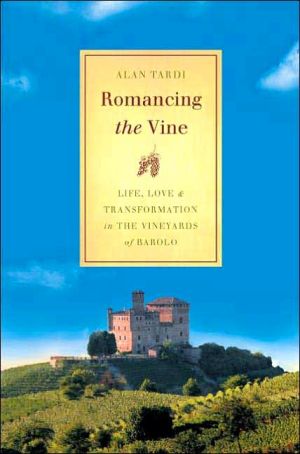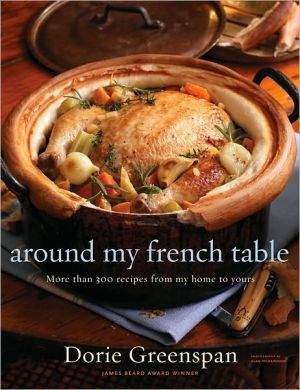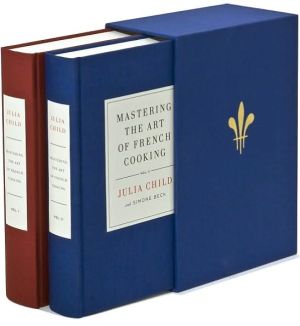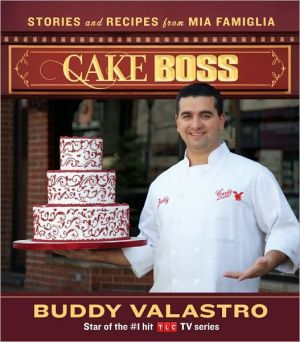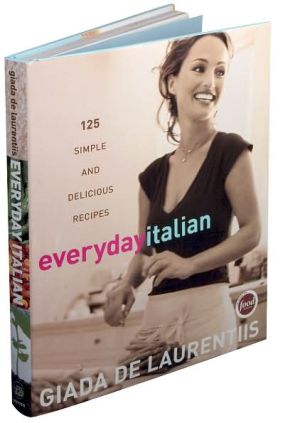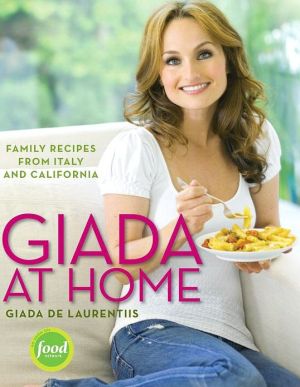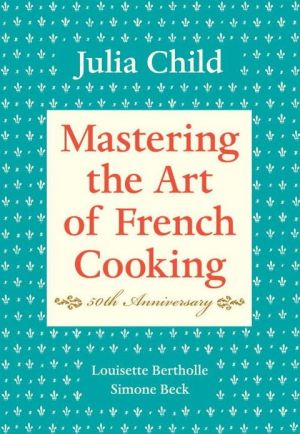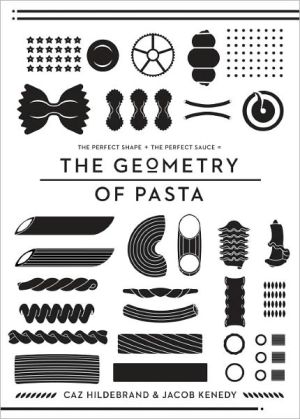Romancing the Vine: Life, Love, and Transformation in the Vineyards of Barolo
Alan Tardi, former owner of Follonico in New York, describes his life in the Piedmonte district of Italy focusing on the cultivation and harvest of the region's celebrated Barolo wine, and including rare local recipes
Search in google:
Alan Tardi, former owner of Follonico in New York, describes his life in the Piedmonte district of Italy focusing on the cultivation and harvest of the region's celebrated Barolo wine, and including rare local recipes Publishers Weekly In 2002 Tardi closed his New York City restaurant, Follonico, and slowly emigrated to a new life in Castiglione Falletto, a village in Italy's famous Barolo wine region of Piedmont. He was drawn away from a post-September 11 New York (where he still spends part of the year) by the love of a beautiful woman, Ivana; the reassuring natural rhythms of wine making; and the casual culinary splendor of local cooking, which he recounts in 25 recipes featuring regional and personal specialties like Renza's Chicken, Frog-Style and Grape Must Conserve. Tardi spends much of his time working Ivana's family vineyard back to life with her brother Fabrizio, relating his experience tending vineyards and giving folkloric accounts of Barolo's vinicultural history. Although Tardi himself experiences a transformation in the vineyards, readers familiar with food and wine memoirs will likely not encounter anything they haven't read before recipes interspersed with charming anecdotes about local characters, descriptions of age-old customs, conspiratorial asides about how different his lifestyle has become but much like the reliably good food Tardi served for years in his restaurant, his take on the healing powers of old-fashioned hard work and his guidance into his lifestyle is comforting and satisfying. (Nov.) Copyright 2006 Reed Business Information.
Romancing the Vine\ Life, Love, and Transformation in the Vineyards of Barolo \ \ By Tardi, Alan \ St. Martin's Press\ Copyright © 2006 Tardi, Alan\ All right reserved.\ ISBN: 9780312357948 \ \ \ Part I \ First Pruning\ \ Winter\ \ 1 • First Forays\ \ I had been to Italy many times before, but this was my first visit to Torino. In many ways this city didn’t feel like Italy at all. Wide, straight, portico-lined boulevards, square piazzas, and large traffic circles arranged with ordered symmetry into long vistas punctuated by prominent sculptures or imposing edifices seemed almost Parisian, while immense cafés of gleaming marble, sparkling crystal, and ornate stucco suggested Vienna.\ \ The Salone del Gusto, a massive biennial celebration put on by a Piemonte-based organization called Slow Food, was different too.\ \ Day after day, from 11 a.m. until well after dark, I walked up and down long corridors of stands set up by artisan food producers from all over Italy, Europe, and the world. I tasted sweet red garlic, salty prosciutto from a wild pig you have to slice as if playing a violin, and a dark, funky cheese that had been buried underground for a year. I went to workshops on a myriad of arcane subjects, such as a comparative tasting of four protected species of chicken (each simply boiled and served at room temperature without seasoning so as not to alter the natural flavor of thebird), another describing a traditional practice of raising rabbits in caves, and yet another featuring sheep’s milk cheese made by Sardinian shepherds, paired with wines from the island’s obscure indigenous grape varieties.\ \ For a break, I strolled along the shopping arcade of the Renzo Piano–designed hotel next door and watched “normal” people devour hot dogs and slices of reheated pizza without giving it a second thought. On several occasions I took the elevator up to the mercifully small and uncrowded Agnelli Museum on the top floor and there gazed silently on the large, soberly precise paintings of Venice by Canaletto, a series of early Matisses from the south of France—warm and busy and gay with bright though somewhat muted colors as if washed out by an abundance of sunlight—and my favorite: the cool, restrained but immensely sensuous Nu, Couché by Modigliani.\ \ In the evenings when I could stand no more of the frenetic fair, I returned to the Centro Storico, the old historic part of town, and wandered through streets and plazas already decked out with a bedazzling array of holiday lights, each installation designed by a different artist.\ \ After the fifth day I had more than enough information to write my story. My stomach was full to capacity with delicious unusual foods, my head was swimming with data, and my psyche was jittery. I was experiencing physical and emotional overload and needed to chill, preferably in a quiet place with someone familiar.\ \ I was not expected in Tuscany for another ten days, so I decided to go visit a friend, Bruna, in the wine country near Alba. It was a mere hour to the southeast and I could stop off there for a day or two before continuing to work my way down to Carmignano.\ \ Bruna is a great cook, especially when it comes to the regional dishes of her native Piemonte, and was one of the original “Mothers” of a restaurant in Manhattan called Le Madri, where I had been the original executive chef. I picked Bruna up at JFK when she first came to New York, helped her get acclimated to her new high-rise home and to working in a big Manhattan restaurant kitchen, took her to the dentist, and translated for her when hand gestures alone weren’t sufficient.\ \ We became friends and kept in touch after I left Le Madri. Some months later, Bruna left the restaurant too but stayed on in New York for nearly a decade, cooking in a number of different places. The year before, she had returned home to Piemonte for good and was now working in a restaurant in Castiglione, the town where she was born.\ \ I picked up my rental car in Torino, got myself onto the autostrada, and, about an hour later, left the highway and zigzagged through the countryside to the little village. I met Bruna in the café at the foot of the hill. She brought me up to the hotel to see if they had any rooms available. It wasn’t easy—it was still truffle season—but they managed to find me a room, as long as I didn’t mind switching the next day.\ \ I didn’t mind at all. I was laid back and agenda-free (at least for the next ten days), just taking things as they came. Originally I had thought to stay only a couple nights but kept extending my visit incrementally, changing rooms not once but three times.\ \ I liked Castiglione. It was cozy and quiet; the people were friendly, and, what’s more, they seemed to like me too.\ \ \ Recipe #1\ Bicerin\ \ Bicerin (from the Piemontese dialect diminutive of bicer, referring to the glass in which it is typically served) is a bittersweet concoction of rich chocolate, coffee, and cream. It was invented here in Torino during the heyday of the 1800s and remains the sweet beverage of choice.\ \ This baroque city offers many grand cafés where bicerin may be consumed in elegant surroundings. But my favorite place is a sweet, cozy little tearoom where you are efficiently attended to by the prim proprietress and her staff of female assistants. It is called simply Bicerin and is located on the Piazza della Consolata, right across from the sanctuary of the same name.\ \ Shortly after your order is conveyed to the kitchen, you will hear the sounds of a whisk scraping energetically against a metal bowl (they make each Bicerin to order the old-fashioned way), and before long a glass of dark steaming chocolate and frothy cream will be placed proudly before you. Nobody does it better, and, in my opinion, there is no finer place to enjoy a Bicerin than right here.\ \ The recipe, according to the padrona, is ridiculously simple: “Take 1 cup of the very best hot chocolate you can find, mix it with 1 demitasse of the very best espresso (our private blend is 100 percent Arabica and ground for us especially) and scoop a hefty dollop of freshly whipped cream on top. Serve it in a glass. Et voilà!” (But if the recipe is so simple, why does the bicerin at Bicerin taste so much more delicious than anywhere else?)\ \ \ Recipe #2\ Finanziera\ Classic Innards Stew, adapted from Ristorante del Cambio, Torino\ \ This rich stew is one of the classics of Piemontese cucina borghese (cooking of the urban upper classes), and Ristorante del Cambio in Torino, in continuous operation since 1754, is credited with having invented it.\ \ While Cambio’s baroque dining room may seem frozen in time, it shows no sign of fatigue: crystal and gold leaf sparkle in the candlelight, mirrors glimmer, linen is crisp, and flowers fresh and fragrant. Even the table where the first king of Italy, Vittorio Emanuele II, used to have lunch each day is still there and perfectly set as if waiting for him to appear.\ \ Many today might turn up their noses at this old-fashioned dish. But, while it may be predominantly offal, it is not awful. Each of the exotic ingredients has its own distinctive shape and mild taste, which meld together into an altogether inoffensive creamy richness, a subtle symphony of muted flavors and textures. If you can accumulate enough of the ingredients to create a reasonable facsimile—or, better yet, ever find yourself in Torino and can secure a table at Cambio—I would encourage you to try it.\ \ Ingredients for Finanziera\ \ 2 tablespoons white wine vinegar\ Coarse salt\ 1 calf’s brain (about 3 ounces)\ 6 ounces veal sweetbreads\ 2 ounces spleen (bone marrow) from the spinal cord of a calf (see note below)\ 3 ounces cockscombs\ 6 ounces veal testicles\ 4 ounces butter\ 31/2 ounces chicken breast, lightly pounded and cut into 1/2-inch pieces\ 3 ounces (11/4-inch slice) calf’s liver, cleaned of any cartilage and cut into 1/2-inch pieces\ 4 scallions, sliced into thin rounds\ 2 ounces of small porcini mushrooms marinated in oil and vinegar\ 1 bay leaf\ 1/2 cup dry Marsala\ 1 teaspoon cider vinegar\ 1 tablespoon balsamic vinegar\ 1 tablespoon of veal demi-glace or concentrated chicken broth\ \ for the semolina\ \ 1 pint milk\ 1 tablespoon sugar\ 1/3 cup semolina flour\ 1 egg yolk\ 3 cups vegetable oil for frying\ 2 tablespoons flour\ 1 egg + 1 egg white, beaten\ 1/4 cup bread crumbs\ \ i. prepare the fried semolina\ \ 1. Bring the milk to a boil. Add the sugar.\ 2. Gradually add the semolina flour and cook, stirring constantly, for about 10 minutes.\ 3. Remove from the heat and stir in the egg yolk.\ 4. Pour the mixture out onto a small greased cookie sheet or Teflon baking pan (the semolina should be about 1/2 to 3/4 inch thick) and let cool. (May be made a day or two ahead to this point.)\ 5. Heat the oil in a high-walled, heavy-bottomed pot. Cut the semolina into diamonds about 1 inch long, dust with the flour, dip in the beaten egg, roll in the breadcrumbs, and fry in the hot oil.\ 6. When golden brown, remove them from the oil with a slotted spoon and blot on a paper towel.\ \ ii. prepare the finanziera\ \ 1. Bring a pot of water to boil. Add the white wine vinegar and a pinch of salt. Rinse the calf’s brain thoroughly in cold water, add to the boiling water and simmer gently for 6 to 8 minutes. Remove with a slotted spoon and shock under cold water. Put the brain on a plate, cover with plastic wrap, and refrigerate with a light weight (such as a small tray) on top. Repeat with the sweetbreads and spleen.\ 2. Cook the cockscombs in the simmering acidulated water until tender (about 15 minutes). Remove with a slotted spoon and rinse under cold water. Repeat with the testicles.\ 3. Cut the sweetbreads, spleen, and brain into 11/2-inch pieces. Cut the testicles and cockscombs in half (if the cockscombs are small, leave them whole).\ 4. Melt half of the butter in a large nonstick sauté pan. On a medium-high heat, add the chicken breast and the liver, and cook until opaque on the outside (about 1 minute). Add the scallions and continue cooking, stirring occasionally, until they are soft and transparent (about 4 minutes).\ 5. Add the mushrooms and the bay leaf and all of the offal except for the brain, and sauté for about 5 minutes. Add the brain to the pan and toss.\ 6. Deglaze with Marsala. Add the cider and balsamic vinegar and the demi-glace or stock. Add the remaining chilled butter to thicken the sauce.\ \ Remove the bay leaf, divide onto plates, and serve hot with the fried semolina.\ \ yield: serves 4 to 6 as an appetizer.\ \ note: Some of the ingredients for this recipe—veal testicles, spleen, cockscombs, etc.—may be difficult to find. Ask a good butcher, who may be able to get them for you. Leave something out if you can’t get it. Some people in Piemonte consider this a poor man’s dish, a way of utilizing available ingredients, and make a Finanziera-like dish with all poultry meat and giblets, others add little meatballs or peas and a touch of cream.\ \ Copyright © 2006 by Alan Tardi. All rights reserved. \ \ Continues... \ \ \ \ Excerpted from Romancing the Vine by Tardi, Alan Copyright © 2006 by Tardi, Alan. Excerpted by permission.\ All rights reserved. No part of this excerpt may be reproduced or reprinted without permission in writing from the publisher.\ Excerpts are provided by Dial-A-Book Inc. solely for the personal use of visitors to this web site. \ \
\ Publishers WeeklyIn 2002 Tardi closed his New York City restaurant, Follonico, and slowly emigrated to a new life in Castiglione Falletto, a village in Italy's famous Barolo wine region of Piedmont. He was drawn away from a post-September 11 New York (where he still spends part of the year) by the love of a beautiful woman, Ivana; the reassuring natural rhythms of wine making; and the casual culinary splendor of local cooking, which he recounts in 25 recipes featuring regional and personal specialties like Renza's Chicken, Frog-Style and Grape Must Conserve. Tardi spends much of his time working Ivana's family vineyard back to life with her brother Fabrizio, relating his experience tending vineyards and giving folkloric accounts of Barolo's vinicultural history. Although Tardi himself experiences a transformation in the vineyards, readers familiar with food and wine memoirs will likely not encounter anything they haven't read before recipes interspersed with charming anecdotes about local characters, descriptions of age-old customs, conspiratorial asides about how different his lifestyle has become but much like the reliably good food Tardi served for years in his restaurant, his take on the healing powers of old-fashioned hard work and his guidance into his lifestyle is comforting and satisfying. (Nov.) Copyright 2006 Reed Business Information.\ \ \ \ \ Kirkus ReviewsAfter the dismal fall of 2001, Chef Tardi closed his popular New York restaurant, Follonico, to spend some time in the Piedmont, a Barolo wine-growing region between Turin and Genoa. He found it quite congenial. Tardi describes with artful restraint the colorful local characters and gives effusive attention to the native vintner's art. He scrutinizes a year of the grape, from dormant vine, first growth and pruning through harvest, lovingly describing the transformation from fruit to wine. Care and chemistry, tradition and tasting are accorded proper and learned attention as well. The author seasons his journal with local history. Interspersed are a few dozen local recipes that may not appeal to every reader. One dish calls for calf's brains, sweetbreads, spleen, cockscombs, veal testicles (6 oz.), liver and, along with the frugal offal, a bit of chicken. Near the end, Tardi explains how to make tripe soup, good for lunch, dinner or breakfast. Happily, the prosperous locals no longer enjoy Gatto alla Cacciatora, so their cats may now roam more freely. But if the recipes do not attract, readers may nevertheless want to find a nice bottle of a 2003 Barolo. The author might have gathered some of the grapes in it. Made con amore, a mixture of travelogue, wine primer and cookbook, prepared with skill and served with a dash of measured thought. Agent: David Black/David Black Literary Agency\ \
